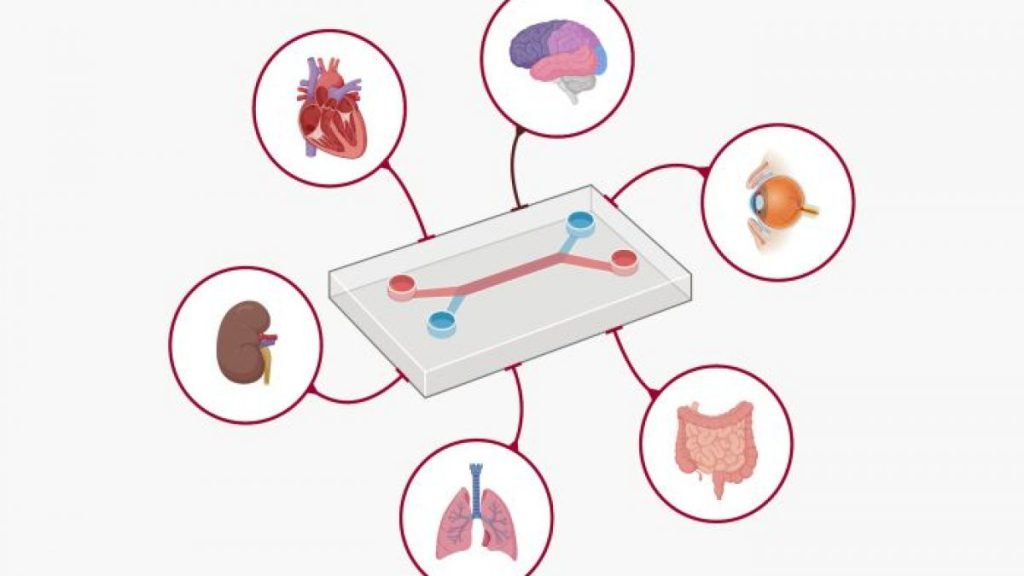Context:
The organ-on-chips technology, a type of new approach method (NAM), could boost the BioE3 (Biotechnology for Economy, Environment and Employment) policy’s goal to personalise medicine.
More on the News
- Recently, the Government of India announced the ‘BioE3 policy’ to drive innovation in the biotechnology sector.
- A key focus area of the policy is precision therapeutics, which involves developing and administering drugs according to the needs of individual patients.
- In the field of precision therapeutics, ‘new approach methods’ (NAMs), such as 3D spheroids, organoids, bioprinting, and organ-on-chips, have shown great promise.
‘New Approach Methods’ (NAMs)
- NAMs are any technology, methodology, approach, or combination that aims to replace or supplement traditional animal testing in drug development.
Organ-on-chips
- An organ-on-chip is a small device designed to recreate the dynamic functions of some human organ in a controlled microenvironment.
Significance of Organ-on-chips Technology
- Reduction in animal testing: Organ-on-chip technology offers a more accurate alternative to animal testing, addressing the ethical and scientific limitations of animal models.
- Improved drug testing accuracy: By mimicking human organs’ functions in a controlled environment, organ-on-chips provide a more reliable platform for assessing drug efficacy and toxicity.
- Faster drug development: The technology could shorten the drug development process, reducing the time it takes to bring new drugs to market.
- Cost efficiency: Organ-on-chips have the potential to lower the overall cost of drug development, which currently averages $2.3 billion per drug.
- Higher success rates in clinical trials: With more precise preclinical testing, organ-on-chips may reduce the number of drug candidates that fail in human trials after succeeding in animal models.
- Personalized medicine: The technology supports personalized treatment by integrating human-derived cells, helping tailor therapies to individual patients.
- Growing commercial value: Increasing R&D investments in NAMs reflect the growing market potential of organ-on-chip technology, which is projected to reach $1.4 billion by 2032.
Recent global initiatives to promote Organ-on-chips
- An English company named CN Bio raised $21 million from venture capitalists to expand its R&D in organ-on-chip technology.
- In the USA, Vivodyne raised $38 million in seed funding to integrate large-scale automation and AI with organ-on-chips.
- USA Passed FDA Modernisation Act 2.0 (2022) which allows researchers to develop, use, and qualify organs-on-chips as a suitable alternative wherever applicable, including to test drugs at the preclinical stages of drug development.
India’s initiative to promote Organ-on-chips
- In 2023, India amended the New Drugs and Clinical Trials Rules 2019 to permit the use of human organs-on-chips and other NAMs prior to and in conjunction with animal testing when evaluating new drugs.
- Currently, more than 80 laboratories are working on NAMs, including developing 3D culture models for various applications.
BioE3 policy
- The BioE3 (Biotechnology for Economy, Environment and Employment) Policy was recently approved by the Union Cabinet.
- It aims at ‘Fostering High Performance Biomanufacturing’ aligned with National initiatives of the government of India such as ‘Net Zero’ carbon economy and Mission LiFE (Lifestyle for environment).
The six thematic sectors of the policy are:
- Bio-based chemicals and enzymes
- Functional foods and Smart proteins
- Precision biotherapeutics
- Climate resilient agriculture
- Carbon capture and its utilization
- Futuristic marine and space research

